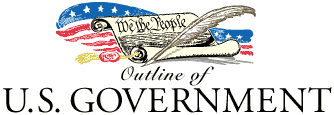
| Ch 1 | Ch 2 | Ch 3 | Ch 4 | Ch 5 | Ch 6 | Ch 7 | Ch 8 | APP |THE MEDIA
| |
|
Americans realized early on that easy access to information would be fundamental to the proper functioning of their new democracy. They would not be able to make sound decisions about candidates and policies without it. To be effective, moreover, this information would have to be readily available and widely distributed. The answer was newspapers. America's first daily paper appeared in Philadelphia, Pennsylvania, in 1783. By 1800, Philadelphia had six dailies; New York City had five; Baltimore, Maryland, had three; and Charleston, South Carolina, had two, with almost 250 other papers, most of them weeklies, scattered around the country. By 1850, there were 2,000 papers, including 200 dailies. The independent obduracy of journalists has caused conflict with many American politicians from the country's earliest days. George Washington wrote in 1792 that "if the government and the officers of it are to be the constant theme for newspaper abuse, and this too without condescending to investigate the motives or the facts, it will be impossible, I conceive, for any man living to manage the helm or to keep the machine together." On the other hand, politicians have recognized the media's crucial role in keeping the electorate informed. Thomas Jefferson wrote in 1787 that "were it left to me to decide whether we should have a government without newspapers, or newspapers without a government, I should not hesitate a moment to prefer the latter." Radio became important to politics in 1924, when the proceedings of the national political party conventions were first broadcast live. In that year, the parties began paying for radio advertisements — the Republicans spent $120,000; the Democrats, $40,000. Four years later, expenditures by the two parties had leaped to a million dollars, beginning the upward spiral in campaign spending that has accelerated in recent years. George Gallup began conducting public opinion polls in 1934, starting with small samples in key districts. He believed that these polls would provide "a swift and efficient method by which legislators, educators, experts, and editors, as well as ordinary citizens throughout the length and breadth of the country, can have a more reliable measure of the pulse of democracy." Today, polling has become far more sophisticated as questioning has been refined by experience, and analysis has been aided by the introduction of modern technology. In spite of occasional errors, polling is generally considered to be an effective way to keep track of public opinion. The first television broadcast of a political convention came in 1940, with an audience of 100,000 viewers. By the 1950s, television was reaching one-third of America's households. The two parties spent $3.5 million on television ads during the 1952 campaign, with the Republicans continuing to outspend the Democrats by a large margin. The 1960 Kennedy-Nixon debates clinched the crucial role of television in modern campaigning. "Television has become the most significant information resource for most Americans," says British historian Philip John Davies in Elections USA. "Candidates for major office wishing to make a significant impact are not in the position of being able to ignore television news coverage, nor can they pass up the opportunity to advertise on this medium.... Moreover, the public has begun to expect television appearances, at least from candidates for major office; a candidate for congressional, state-wide, or even substantial local office may still use radio and print media advertising very effectively, but with no television output the campaign barely looks credible."
|
|
RETURN TO
|